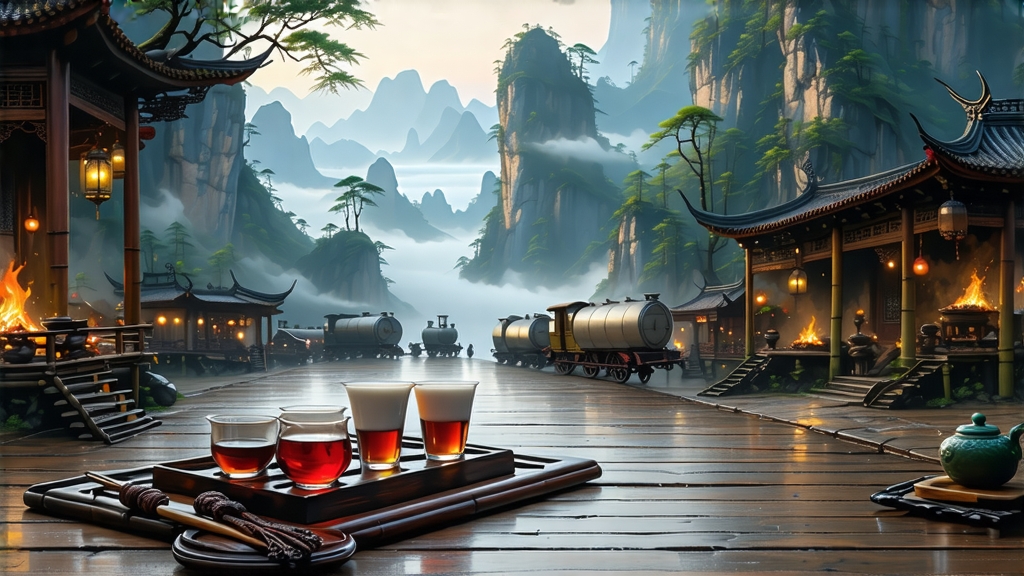
When European tea clippers first rounded the Cape of Good Hope in the late seventeenth century, the chests that fetched the highest prices at Amsterdam and London auctions were stamped with a mysterious Chinese mark: “Lapsang Souchong.” Merchants whispered that inside those lead-lined crates lay leaves scented with incense and campfire, a flavor so novel that the English soon abandoned their breakfast ale in favor of what they would christen “black tea.” That original black tea—born in the granite gorges of the Wuyi massif in northern Fujian—still survives under the name Lapsang Souchong (Zheng Shan Xiao Zhong in Mandarin). To understand it is to hold the prototype of every keemun, ceylon, and assam that followed; yet it remains a living, evolving craft, equally at home in imperial courts and third-wave cafés.
History: From Ming Frontier Tribute to London Drawing Rooms
Local legend dates the birth of smoked black tea to 1567–68, when a Ming garrison passed through Tongmu village, commandeering tea sheds and forcing farmers to dry their half-fermented leaves overnight over pine fires so the troops could march at dawn. The accidental batch, dark as oxblood and perfumed with resin, traveled down the Nine-Bend River to the port of Xingcun, where Dutch factors bought it as “bohea” (a corruption of “Wuyi”). By 1604 the Dutch East India Company listed “Lapsang”—the Cantonese pronunciation of “pine village”—as a separate grade above green tea. When Catherine of Braganza brought her dowry chests to Charles II in 1662, Lapsang Souchong became the taste that defined fashionable Britain, launching the national obsession that would redraw global maps and fill Boston harbor.
Terroir: The UNESCO Gorge That Breathes Pine
Tongmu lies inside the core protection zone of the Wuyi UNESCO World Heritage site, a subtropical rift where 400-million-year-old granite cliffs trap monsoon clouds, creating a perpetual mist that filters 30 % of sunlight and keeps humidity above 80 %. The canyon floor is laced with quartz-rich sand and pine needles; the air carries terpenes from masson pine, Chinese red pine, and cedar. Only tea picked within this 600–1,200 m micro-zone may legally be sold as Zheng Shan (“Original Mountain”) Xiao Zhong. Outside the pass, the same cultivar (a small-leaf Camellia sinensis var. sinensis locally called “cai cha”) loses the resinous sweetness that defines authentic Lapsang.
Cultivars & Harvest Calendar
Farmers recognize three clonal lines:
- “Old Bush” (40–120 years) growing out of cliff crevices, yielding tiny spring buds with high resin uptake.
- “Sweet Water” selected for low tannin, prized for unsmoked versions.
- “Juicy Stem” used for the new-style “fruit-withered” experiments.
Plucking follows the lunar calendar: Qingming (early April) for the finest pine-smoke grade, Guyu (late April) for standard, and a rare autumn pick in October for charcoal-finished lots. Two leaves and a bud are snapped at 7–9 a.m. while dew still glistens, then carried in bamboo baskets lined with banana leaf to prevent premature oxidation.
Craft: The Eight-Step Pine-Smoke Ballet
- Outdoor Withering: Leaves are laid on bamboo mats beneath the morning mist for 4–6 h, allowing 15 % moisture loss while absorbing airborne pine volatiles.
- Indoor Resurrection: Sha Qing (“kill-green”) is skipped; instead, trays move into the upper loft of the three-story wooden tea house where pine-log fires burn below. Temperature hovers at 30 °C; humidity is manually controlled by opening or closing fir-wood shutters. Over 8 h the leaves turn from jade to mulberry, developing a precursor honey note.
- Rolling: On a round bamboo tray the withered leaves are kneaded by hand for 20 min, breaking cell walls and releasing catechins that will later bond with smoke phenols.
- Oxidation: The twist is spread 3 cm deep in pine-wood boxes covered with wet cloths. For